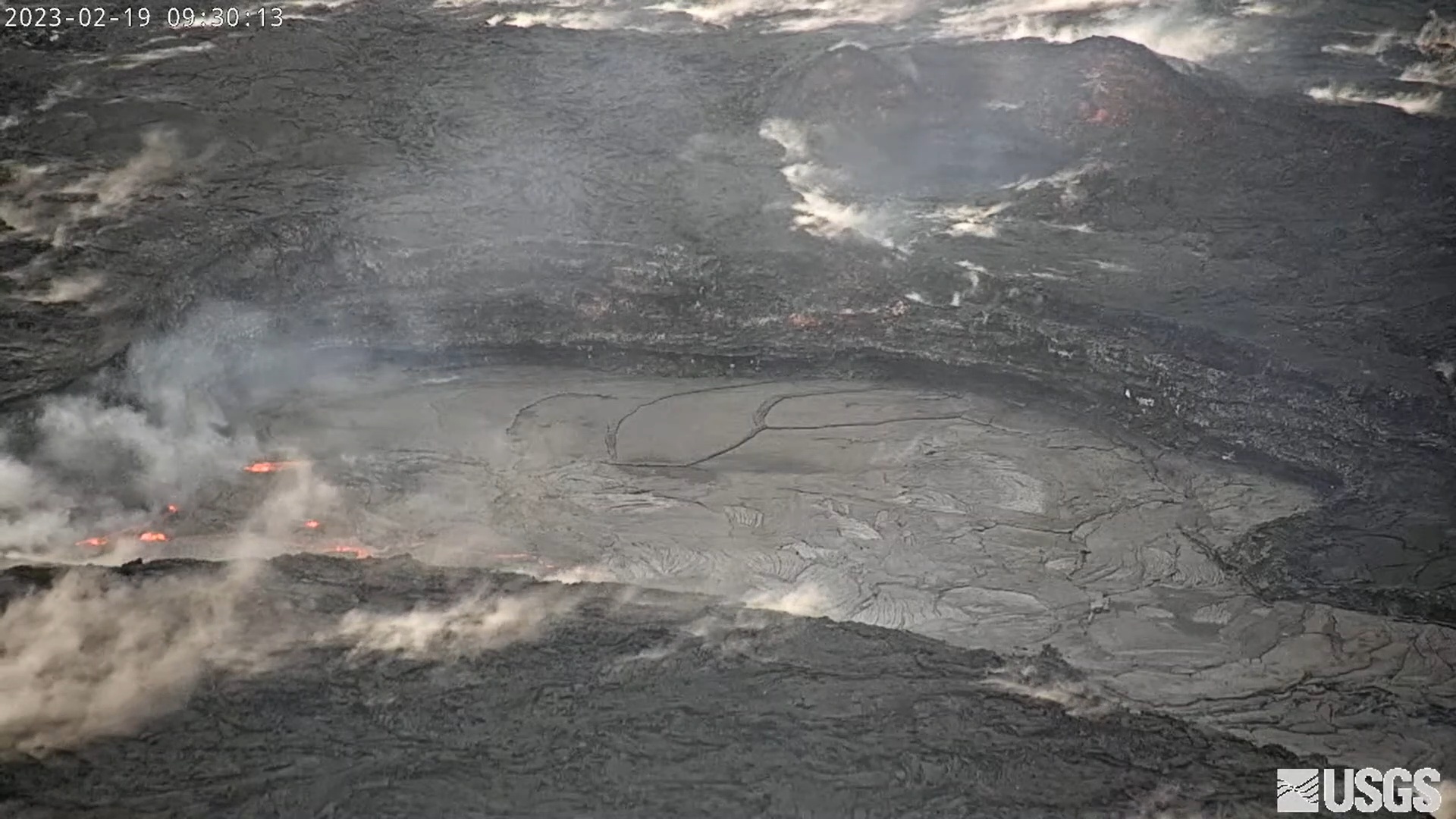(BIVN) – The eruption at the summit of Kilauea volcano continues, but appeared greatly diminished on Sunday.
In a February 19th update, the USGS Hawaiian Volcano Observatory said the eastern and central lava lakes were no longer erupting, and the western lake was still active but at a greatly reduced level.
Scientists wrote:
 USGS Hawaiian Volcano Observatory
USGS Hawaiian Volcano Observatoryon February 19, 2023
Halemaʻumaʻu Lava Lake Observations: Eruption of lava in three locations of Halemaʻumaʻu crater floor is greatly diminished over the past 24 hours. The eastern lake and central lakes are no longer erupting. The western lake in the basin of the 2021–2022 lava lake remains active but at a greatly reduced level. Very little lava is circulating within the lake, which is mostly crusted over with intermittent crustal overturns. The reduction in activity is related to the larger deflationary tilt drop that began in the early morning of February 17. Activity in the eastern and central lakes began to diminish in the late afternoon of February 17th and both were inactive on the 18th. Activity at the western lake diminished throughout the past 24 hours and the lake is now mostly crusted over and down about 10 m. Surface eruptive activity is expected to resume when the summit re-inflates to the level preceding the strong deflation. A live-stream video of the western lava lake is available at: youtube.com.
Summit Observations: Summit tiltmeters have deflated about 6 microradians over the past 48 hours during the onset of a large deflation-inflation (DI) event. Inflation started at about 3 a.m. this morning (February 19) and has recovered about a microradian. There has been about 1 ft (.3 m) of rain during the last 48 hours creating intermittent white outs that obscure the cameras. Volcanic tremor remains above background levels. A sulfur dioxide (SO2) emission rate of approximately 2,000 tonnes per day (t/d) was measured on February 13, 2023.
Rift Zone Observations: No unusual activity has been noted along the East Rift Zone or Southwest Rift Zone; steady rates of ground deformation and seismicity continue along both. Measurements from continuous gas monitoring stations downwind of Puʻuʻōʻō in the middle East Rift Zone have been below detection limits for SO2, indicating that SO2 emissions from Puʻuʻōʻō are negligible.
On February 14, USGS video cameras recorded low fountaining at the central vent, as it was supplying lava into a channel that flowed towards the large eastern lake.


by Big Island Video News8:58 pm
on at
STORY SUMMARY
HAWAIʻI VOLCANOES NATIONAL PARK - The reduction in activity is related to a large deflationary tilt drop that began in the early morning of February 17.